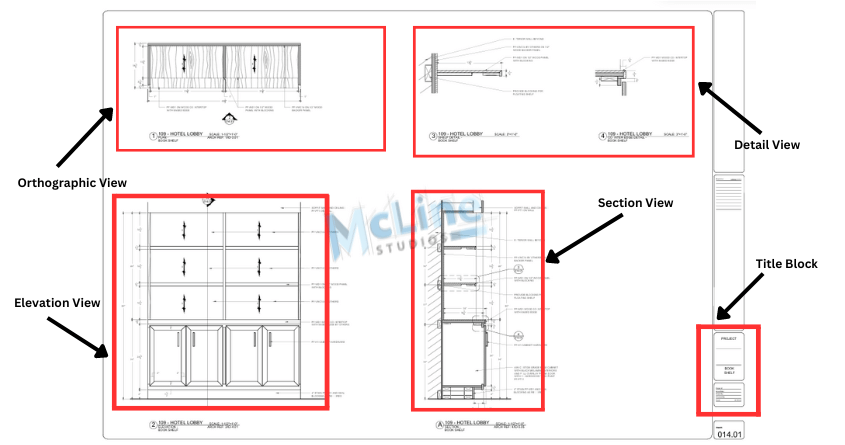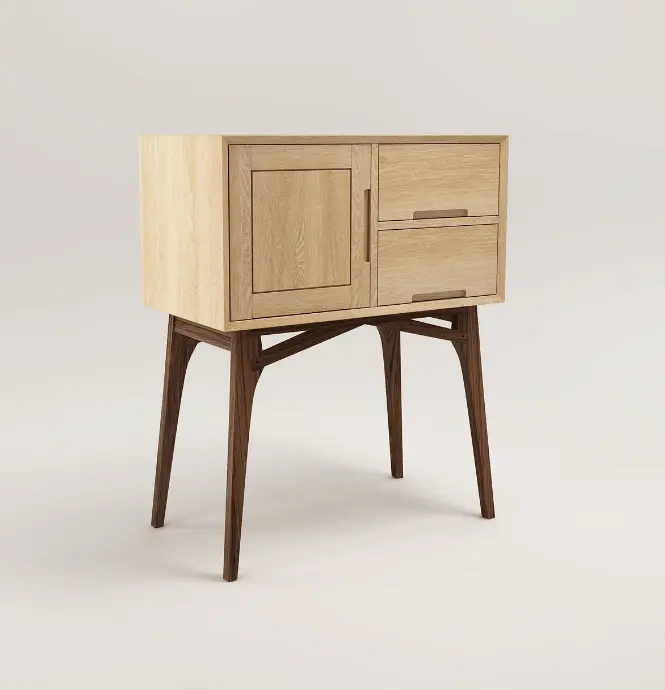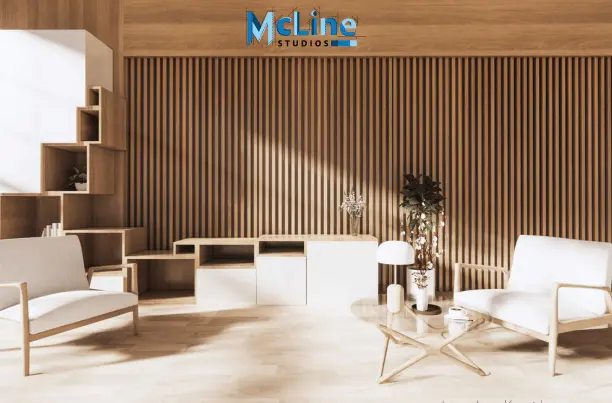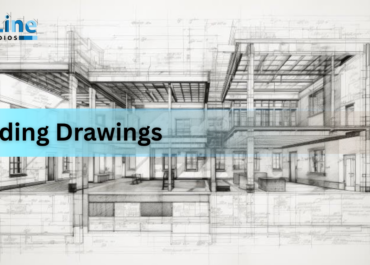Furniture shop drawings are detailed, scaled representations of furniture designs, providing essential information for constructing and assembling a piece of furniture. These drawings bridge the design concept and the actual production by making sure that the final product meets the desired specifications.
They typically include various views (e.g., top, side, front), dimensions, material specifications, and construction details. They are also crucial for efficient communication between designers, manufacturers, and craftsmen. This helps in minimizing errors in the production process.
In this article, we’ll delve into the various elements of furniture shop drawings and highlight their importance in the industry.
Elements Of Furniture Shop Drawings
Furniture shop drawings serve as a guide for manufacturers, builders, and craftsmen. Here are the key elements typically included in furniture shop drawings:

Title Block
- Project Name and Number: Identifies the specific project.
- Drawing Title: Description of the furniture piece.
- Date: When the drawing was created or last revised.
- Scale: The ratio of the drawing to the actual size of the furniture.
- Revision Block: Records of any changes made to the drawing.
Orthographic Views
- Front View: This view shows the front of the piece.
- Top View: This shows the top of the piece.
- Side Views: Shows the sides of the piece.
- Rear View: This shows the back of the piece (if necessary).
- Bottom View: Shows the bottom of the piece (if necessary).
Section Views
- Cross-Sections: It provides internal views to show hidden details.
- Longitudinal Sections: If the piece is long, this view shows internal construction along the length.
Detail Views
- Enlarged Areas: Focuses on intricate or critical areas that need more clarity.
- Connections and Joinery: Detailed views of how parts are joined (e.g., dovetail joints, screws).
Dimensions and Annotations
- Overall Dimensions: Length, width, height of the entire piece.
- Component Dimensions: Sizes of individual parts.
- Tolerance Levels: Acceptable variations in measurements.
- Material Specifications: Types of materials to be used (wood species, metal types, etc.).
- Finish Specifications: Details on paint, varnish, stain, or other finishes.
Assembly Instructions
- Exploded Views: Shows all components separated but about each other to demonstrate assembly.
- Step-by-Step Instructions: Written or visual steps for assembly.
- Hardware List: Specifies screws, nails, hinges, and other hardware.
Bill of Materials (BOM)
- List of Parts: Each part needed, with quantities.
- Material Types: Detailed specifications of materials for each part.
Notes and Legends
- General Notes: Any additional information relevant to the construction.
- Symbols and Abbreviations: Explanation of any symbols or shorthand used in the drawing.
Are Furniture Shop Drawings And Millwork Shop Drawings Similar?
Furniture shop drawings and millwork shop drawings share similarities but cater to different aspects of design and construction. Both types of drawings provide detailed specifications and instructions for fabrication for precision and adherence to design requirements.
Furniture shop drawings focus on individual pieces of furniture. They include detailed dimensions, materials, finishes, and construction methods for items like chairs, tables, and cabinets. These drawings help manufacturers produce custom furniture according to the designer’s vision and client requirements.
Millwork shop drawings, on the other hand, pertain to architectural woodwork integrated into the building structure. This includes elements like moldings, trim, staircases, and built-in cabinetry. In short, millwork drawings are more comprehensive, often involving coordination with other architectural and engineering plans to provide seamless integration into the overall construction.
While both types of drawings require a high level of detail and accuracy, furniture shop drawings are typically more focused on standalone pieces, whereas millwork shop drawings share a broader scope, integrating with the building’s architecture.
Importance Of Furniture Shop Drawings
Furniture shop drawings are important for the design, manufacturing, and installation processes of the piece of furniture. Let’s discuss the importance in detail:

- Customization: For custom furniture, shop drawings are essential to tailor pieces to specific requirements, ensuring that the final product meets the client’s expectations and fits the intended space perfectly.
- Quality Control: Detailed shop drawings allow for thorough review and approval processes. Designers and clients can check and approve the drawings before manufacturing begins, ensuring that any issues are addressed beforehand.
- Material and Cost Estimation: Accurate shop drawings help in estimating the materials needed and the associated costs. This is crucial for budgeting and providing that the project stays within financial constraints.
- Compliance and Standards: They ensure that the furniture meets industry standards and complies with any relevant regulations or codes, guaranteeing safety and functionality.
- Efficiency in Manufacturing: Shop drawings simplify the manufacturing process by providing clear instructions and specifications, reducing production time, and minimizing errors.
- Installation Guidance: They offer detailed guidance for the installation process. This is important so that the furniture is assembled and installed correctly, which is particularly important for complex or built-in pieces.
The End Note
In conclusion, furniture shop drawings serve as a comprehensive blueprint, bridging the gap between conceptual design and tangible production. These detailed representations encompass a wide range of elements, from orthographic views and dimensions to material specifications and assembly instructions.
By providing such thorough information, shop drawings provide precision, consistency, and quality in the final product. While sharing similarities with millwork drawings, furniture shop drawings focus specifically on standalone pieces, offering a more targeted approach to individual furniture items.
Their importance extends beyond mere visualization, playing crucial roles in customization, quality control, cost estimation, and regulatory compliance. Moreover, they streamline the manufacturing process, reduce errors, and provide valuable guidance for installation.




